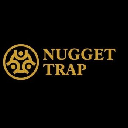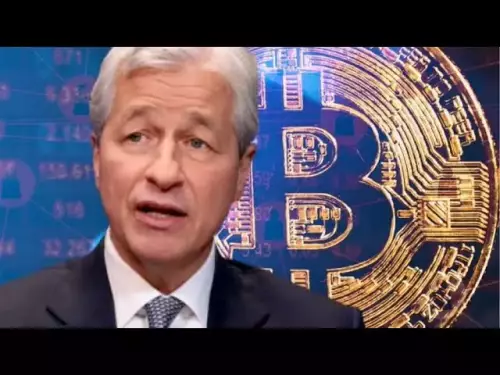-
 bitcoin
bitcoin $114684.631706 USD
-0.87% -
 ethereum
ethereum $4228.677447 USD
1.58% -
 bnb
bnb $1294.880693 USD
-1.16% -
 tether
tether $1.000819 USD
-0.02% -
 xrp
xrp $2.605138 USD
2.79% -
 solana
solana $209.908690 USD
5.89% -
 usd-coin
usd-coin $0.999903 USD
-0.03% -
 dogecoin
dogecoin $0.213423 USD
2.93% -
 tron
tron $0.322721 USD
-0.10% -
 cardano
cardano $0.727247 USD
3.66% -
 hyperliquid
hyperliquid $42.339456 USD
6.05% -
 chainlink
chainlink $19.910811 USD
5.16% -
 ethena-usde
ethena-usde $1.000557 USD
0.00% -
 stellar
stellar $0.349734 USD
2.69% -
 bitcoin-cash
bitcoin-cash $543.848687 USD
-0.21%
What is cross-chain DeFi? What problems does it solve?
Cross-chain DeFi enhances interoperability and liquidity across blockchains, solving fragmentation and scalability issues in the DeFi ecosystem.
May 17, 2025 at 03:15 pm
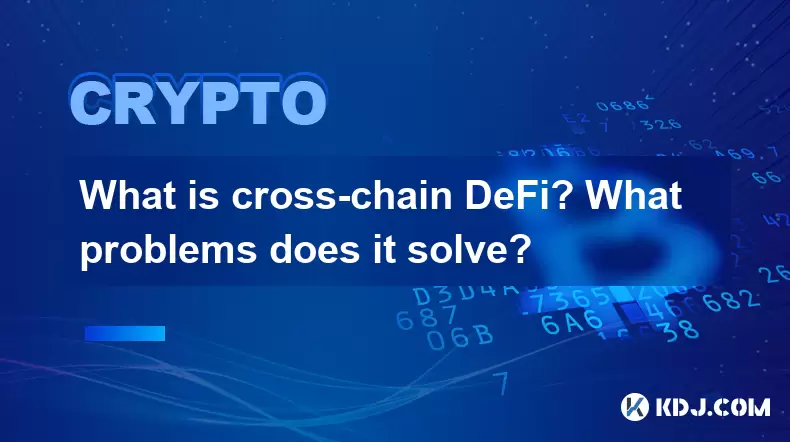
Cross-chain DeFi, or Decentralized Finance, refers to the integration of different blockchain networks to facilitate the seamless transfer and utilization of assets across these networks. This innovative approach aims to enhance the interoperability, liquidity, and efficiency of DeFi applications, thereby solving several key challenges in the current DeFi ecosystem.
What is Cross-chain DeFi?
Cross-chain DeFi involves the use of protocols and technologies that enable the transfer of assets and data between different blockchain networks. This is crucial because many DeFi applications are built on specific blockchains, such as Ethereum, and users often face limitations when trying to utilize assets across multiple chains. By enabling cross-chain functionality, users can access a broader range of DeFi services and assets, enhancing their overall experience.
Problems Solved by Cross-chain DeFi
One of the primary problems that cross-chain DeFi addresses is the issue of fragmentation. Currently, the DeFi ecosystem is fragmented across various blockchains, each with its own set of applications and assets. This fragmentation can lead to liquidity issues, as assets are locked within specific chains and cannot be easily moved or utilized elsewhere. Cross-chain DeFi solutions help to bridge these gaps, allowing for the seamless transfer of assets and liquidity across different networks.
Another significant problem that cross-chain DeFi tackles is interoperability. Without cross-chain solutions, users are often required to convert their assets into a common token before they can be used across different platforms. This process can be cumbersome and may result in additional fees and delays. Cross-chain DeFi protocols streamline this process, enabling direct transfers and interactions between assets on different blockchains.
Cross-chain DeFi also enhances scalability within the DeFi ecosystem. As more users and applications join the DeFi space, the demand for efficient and scalable solutions increases. By allowing assets to move freely between chains, cross-chain DeFi can help to distribute the load across multiple networks, reducing congestion and improving the overall performance of DeFi applications.
How Does Cross-chain DeFi Work?
Cross-chain DeFi operates through various protocols and technologies designed to facilitate the transfer of assets and data between different blockchains. Some of the most common methods include atomic swaps, wrapped tokens, and bridge protocols.
Atomic Swaps: Atomic swaps allow for the direct exchange of assets between two different blockchains without the need for intermediaries. This method uses smart contracts to ensure that the swap is executed only if both parties fulfill their obligations, reducing the risk of fraud.
Wrapped Tokens: Wrapped tokens are a type of token that represents an asset from one blockchain on another blockchain. For example, Wrapped Bitcoin (WBTC) allows Bitcoin to be used on the Ethereum network. These tokens are backed by the original asset, which is held in a secure custody solution.
Bridge Protocols: Bridge protocols are specialized networks that connect different blockchains, enabling the transfer of assets and data between them. These protocols often use a combination of smart contracts and off-chain solutions to ensure the secure and efficient transfer of assets.
Examples of Cross-chain DeFi Projects
Several projects are at the forefront of cross-chain DeFi, each offering unique solutions to enhance interoperability and liquidity within the DeFi ecosystem.
Polkadot: Polkadot is a multi-chain network that allows different blockchains to interoperate and share information. It uses a relay chain to connect various parachains, enabling the seamless transfer of assets and data across different networks.
Cosmos: Cosmos is a network of interconnected blockchains that can communicate with each other through the Inter-Blockchain Communication (IBC) protocol. This allows for the transfer of assets and data between different chains, enhancing the overall interoperability of the DeFi ecosystem.
Thorchain: Thorchain is a decentralized liquidity network that enables the swapping of assets across different blockchains. It uses a unique consensus mechanism called the Bifröst Protocol to ensure the secure and efficient transfer of assets.
Benefits of Cross-chain DeFi
The adoption of cross-chain DeFi brings several benefits to users and the broader DeFi ecosystem. One of the most significant advantages is increased liquidity. By allowing assets to move freely between different blockchains, cross-chain DeFi solutions help to pool liquidity across the ecosystem, making it easier for users to access and utilize various DeFi services.
Another key benefit is enhanced user experience. Cross-chain DeFi protocols simplify the process of interacting with different DeFi applications, reducing the need for users to manage multiple wallets and navigate complex conversion processes. This can lead to a more seamless and user-friendly experience, encouraging greater adoption of DeFi services.
Cross-chain DeFi also promotes innovation within the DeFi space. By enabling the integration of different blockchains, developers can create more sophisticated and versatile applications that leverage the unique features of multiple networks. This can lead to the development of new DeFi products and services, further enhancing the overall ecosystem.
Challenges and Considerations
While cross-chain DeFi offers numerous benefits, it also presents several challenges and considerations that must be addressed. One of the primary concerns is security. Cross-chain protocols often involve complex interactions between different networks, which can introduce new vulnerabilities and risks. Ensuring the security of these protocols is crucial to maintaining user trust and preventing potential exploits.
Another challenge is regulatory compliance. As cross-chain DeFi solutions enable the seamless transfer of assets across different jurisdictions, they may face increased scrutiny from regulators. Ensuring that these solutions comply with relevant regulations is essential to their long-term viability and adoption.
Scalability is also a key consideration for cross-chain DeFi protocols. As the demand for DeFi services continues to grow, these protocols must be able to handle increasing volumes of transactions and data transfers. Ensuring that they can scale effectively is crucial to maintaining the performance and efficiency of the DeFi ecosystem.
Frequently Asked Questions
Q: How does cross-chain DeFi impact the security of my assets?A: Cross-chain DeFi protocols can introduce new security risks due to the complex interactions between different blockchains. However, many projects implement robust security measures, such as multi-signature wallets and smart contract audits, to mitigate these risks. It's essential for users to research and understand the security practices of the protocols they use.
Q: Can I use cross-chain DeFi solutions with any blockchain?A: Not all blockchains are compatible with every cross-chain DeFi solution. The compatibility depends on the specific protocols and technologies used by each project. Users should check the documentation and supported blockchains of the cross-chain DeFi solution they are interested in to ensure compatibility.
Q: Are there any fees associated with using cross-chain DeFi protocols?A: Yes, most cross-chain DeFi protocols charge fees for the transfer of assets and data between different blockchains. These fees can vary depending on the specific protocol and the volume of transactions. Users should review the fee structures of the protocols they use to understand the costs involved.
Q: How can I get started with cross-chain DeFi?A: To get started with cross-chain DeFi, users should first research and select a reputable cross-chain DeFi protocol that supports the blockchains and assets they wish to use. They will then need to set up wallets on the relevant blockchains and follow the protocol's instructions for transferring assets and interacting with DeFi applications. It's important to start with small transactions and gradually increase exposure as users become more familiar with the process.
Disclaimer:info@kdj.com
The information provided is not trading advice. kdj.com does not assume any responsibility for any investments made based on the information provided in this article. Cryptocurrencies are highly volatile and it is highly recommended that you invest with caution after thorough research!
If you believe that the content used on this website infringes your copyright, please contact us immediately (info@kdj.com) and we will delete it promptly.
- XRP Price Prediction: Weekend Rollercoaster or Rally?
- 2025-10-12 08:45:16
- Bittensor (TAO): Super Bullish Signals Point to Potential 2x Rally
- 2025-10-11 10:25:12
- Silver Price Correction: Navigating the Dip & Identifying Key SEO Keywords
- 2025-10-11 10:25:12
- Decoding Crypto Trends: Bittensor's Bull Run, Cardano's Dip, and LivLive's Presale Buzz in 'Uptober 2025'
- 2025-10-12 08:45:16
- MoonBull: The Crypto Meme Coin Promising 1000x Gains?
- 2025-10-11 10:30:01
- Crypto Payroll Revolution: Stablecoins, Altcoins, and the Future of Salary Payments
- 2025-10-11 10:30:01
Related knowledge

How to track DeFi activity on a block explorer
Sep 04,2025 at 05:36pm
Bitcoin's Role in Decentralized Finance1. Bitcoin remains the cornerstone of the cryptocurrency ecosystem, serving as both a store of value and a benc...
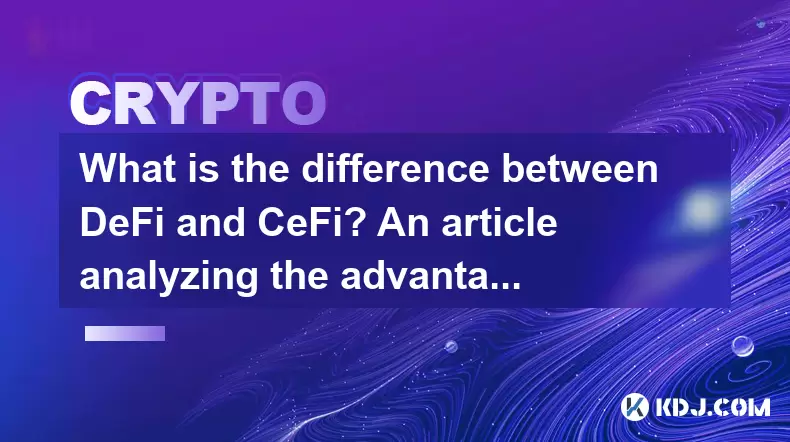
What is the difference between DeFi and CeFi? An article analyzing the advantages and disadvantages of both
Jun 13,2025 at 03:57am
Understanding the Foundations of DeFi and CeFiTo fully grasp the difference between DeFi (Decentralized Finance) and CeFi (Centralized Finance), it’s ...
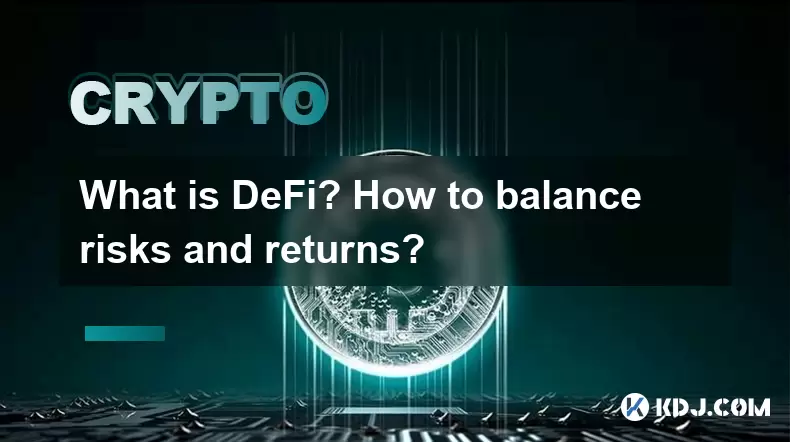
What is DeFi? How to balance risks and returns?
May 31,2025 at 12:22pm
What is DeFi? How to Balance Risks and Returns? Decentralized Finance, commonly known as DeFi, represents a revolutionary shift in the financial ecosy...
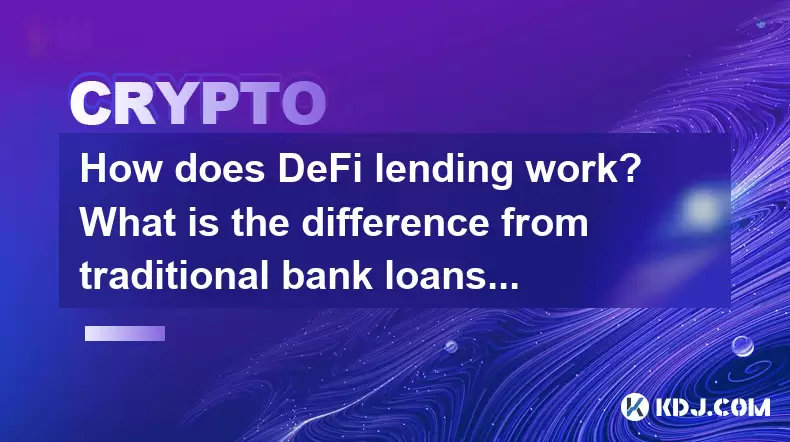
How does DeFi lending work? What is the difference from traditional bank loans?
May 29,2025 at 05:36pm
Introduction to DeFi LendingDeFi lending, or decentralized finance lending, represents a revolutionary shift in the way borrowing and lending are cond...
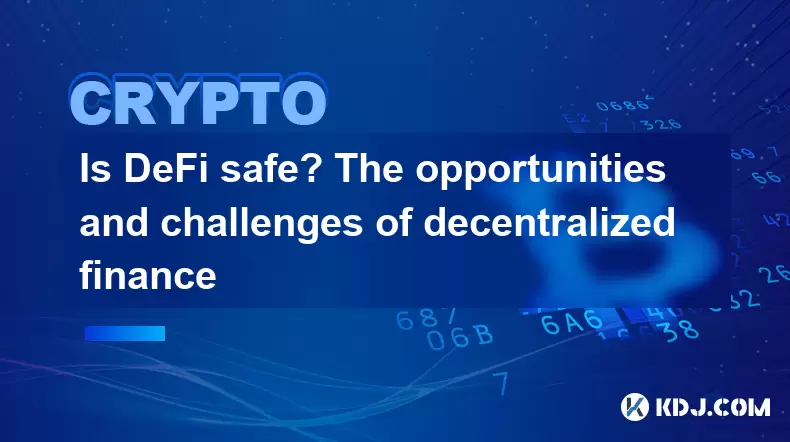
Is DeFi safe? The opportunities and challenges of decentralized finance
May 27,2025 at 02:28pm
Decentralized Finance, commonly known as DeFi, has revolutionized the financial landscape by offering a range of financial services without the need f...
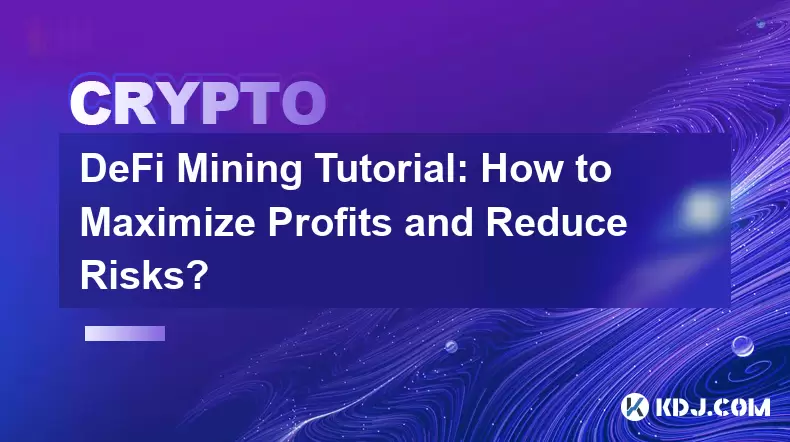
DeFi Mining Tutorial: How to Maximize Profits and Reduce Risks?
May 27,2025 at 07:42am
DeFi, or Decentralized Finance, has opened up a new world of opportunities for crypto enthusiasts looking to maximize their profits through various mi...

How to track DeFi activity on a block explorer
Sep 04,2025 at 05:36pm
Bitcoin's Role in Decentralized Finance1. Bitcoin remains the cornerstone of the cryptocurrency ecosystem, serving as both a store of value and a benc...

What is the difference between DeFi and CeFi? An article analyzing the advantages and disadvantages of both
Jun 13,2025 at 03:57am
Understanding the Foundations of DeFi and CeFiTo fully grasp the difference between DeFi (Decentralized Finance) and CeFi (Centralized Finance), it’s ...

What is DeFi? How to balance risks and returns?
May 31,2025 at 12:22pm
What is DeFi? How to Balance Risks and Returns? Decentralized Finance, commonly known as DeFi, represents a revolutionary shift in the financial ecosy...

How does DeFi lending work? What is the difference from traditional bank loans?
May 29,2025 at 05:36pm
Introduction to DeFi LendingDeFi lending, or decentralized finance lending, represents a revolutionary shift in the way borrowing and lending are cond...

Is DeFi safe? The opportunities and challenges of decentralized finance
May 27,2025 at 02:28pm
Decentralized Finance, commonly known as DeFi, has revolutionized the financial landscape by offering a range of financial services without the need f...

DeFi Mining Tutorial: How to Maximize Profits and Reduce Risks?
May 27,2025 at 07:42am
DeFi, or Decentralized Finance, has opened up a new world of opportunities for crypto enthusiasts looking to maximize their profits through various mi...
See all articles
















